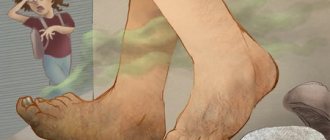Even the most intelligent and organized child can have a decline in academic performance if he does his homework at an uncomfortable desk and sits in an uncomfortable chair. And, of course, a student’s workplace means not only good grades, but also health. A schoolchild who takes unnatural poses because of an uncomfortable chair or table deteriorates his posture - the basis of the child’s health. Incorrect posture often causes curvature of the spine, osteochondrosis, and even provokes the appearance of intervertebral hernias.
The health and safety of a child depends not only on the correct choice of table and chair. Many events and situations await the student: adaptation to school, interaction with peers, first independent movements. To always know that your child is okay, track his location and listen to the sound around him, install the “Where are my kids” application from the AppStore or GooglePlay.
According to the observations of pediatricians, it is precisely first-graders whose posture deteriorates sharply, and the older the child becomes, the more difficult it is to correct the situation. And if you don’t have to choose furniture at school, then the right choice of table and chair for homework will certainly save the student from health problems in the future.
Content:
- Chair for schoolchildren Chair or armchair
- How to choose the right chair: basic criteria
- Types of chairs for a schoolchild’s workplace: advantages, disadvantages, average prices
- Table or desk
Pros and cons of orthopedic chairs
To avoid purchasing new furniture every year as your child grows and grows, you can buy one ergonomic chair for a schoolchild. It is easy to adjust to the student's height. In addition, such a universal model has a number of advantages:
- prevention of spinal diseases and vision problems;
- normalization of blood circulation in the back;
- adjusting the position of the legs and back;
- creating a compact workplace that does not take up much space in the room;
- easy adjustment and height change.
The device is not without its drawbacks. These include high cost. But you can’t buy health, and taking into account the fact that some models can last for years, the purchase becomes even more profitable than purchasing an ordinary chair.
Chair for schoolchildren
Photo: www.freepik.com
Schoolchildren have to sit for a long time - longer than most adults. Therefore, the chair should be comfortable specifically for your child: this way, the student’s back will always be in the correct position.
Chair or armchair
To parents - and to children themselves - a chair for a schoolchild's workplace seems a more attractive option than a regular chair. But, perhaps, the only advantage of armchairs over chairs is a more aesthetic appearance.
In terms of other parameters: ease of design, assistance in the formation of correct posture, low price - the chairs win.
Classical
It has a simple design, equipped with a reliable metal frame, wooden back and seat.
Pros:
- structural stability;
- ease of operation;
- affordable price.
Minuses:
- it is impossible to adjust the height according to the child’s height;
- no orthopedic back and footrest are provided;
- it is uncomfortable for children to sit;
- The product is selected strictly according to the student’s parameters and after a while requires replacement.
How to choose the right chair: basic criteria
A good chair for a schoolchild must meet certain criteria:
- The chair should have a back, ideally an orthopedic one. To choose a chair that suits your child, try “trying it on”: in a sitting position, the child’s hips and back should form a right angle.
- It is desirable that the seat be depth adjustable. Sometimes children have to do homework for 2-3 hours or longer, and with the ability to adjust the backrest to the “closer or further” position, the child will be less tired.
- If you are going to use the chair for a long time, you should choose a model whose height is adjustable. As an option: you can buy a regular chair and a footrest for it. In any case, the student’s feet should be on the floor while doing homework, and not hanging in the air. But, if the student is not a model of perseverance, the stand risks becoming a nuisance that distracts attention: an active child will constantly kick and turn it over.
- Children love chairs and armchairs with swivel wheels. But it is better to choose a model that does not rotate around its own axis - possible trips around the children's room are very distracting. You can find a compromise if your child absolutely wants a chair with wheels - consider a model with mechanical or automatic wheel locking. The mechanical locking is regulated by adults; the automatic locking will work itself if a person weighing more than 30 kilograms sits on the chair.
Regarding armrests—whether they are needed for a schoolchild’s chair or not—expert opinions differ. Some pediatricians believe that a properly positioned armrest that does not violate the shoulder line helps the child keep his back straight. But there is another opinion, especially true for primary school students: armrests that are too high raise the student’s shoulders to an unnatural position, disrupting posture.
If you choose a chair with armrests, it is better to purchase a model whose armrests are adjustable to suit the child’s height. The height of the armrests should be such that the student’s hands are on the tabletop.
Types of chairs for a schoolchild’s workplace: advantages, disadvantages, average prices
The table below shows the best and most popular types of chairs for schoolchildren: their pros, cons and average prices.
More details about each type of chairs for schoolchildren:
Classic
The same chairs that are in most Russian schools. The frame of the models is usually metal, less often plastic. Classic chairs are durable, but short-lived: their size cannot be adjusted as the child grows, and the schoolchild will outgrow such a chair in 1-2 years. It makes sense to choose a classic model if there is more than one child in the family - a simple but strong chair will last several years for all children in turn.
Computer (with wheels)
Photo: globusmebel26.ru
Withstands weight up to 60-70 kilograms. For chairs with wheels, everything that is necessary is adjustable: the height and depth of the seat, the angle of the backrest. The wheels of the models are usually fixed; the chair can only roll forward and backward. Models without armrests are produced especially for elementary school students.
Transformable chairs
Photo: fundesk.ru
“Grows” with the child: such a chair can last from first grade to graduation. The seats of transformable chairs are attached to a steel frame, so the models are durable not only due to their ability to “grow”, but also due to their strength.
Orthopedic chairs
Photo: orto-stul.com
The best option for preventing and correcting existing problems with the spine. Orthopedic models cost a lot, but they fully justify their price: they support the spine in the correct position, relax the back, and evenly distribute the load throughout the body.
An orthopedic chair can be selected taking into account the characteristics of a particular child: there are models with knee support - for children with the habit of sliding onto the edge of the seat; models with a removable footrest; models in the form of a rocking chair, developing the ability to maintain balance.
Advantages of growing chairs from the 38 Parrots factory
- Safety. The design of the models is stable, all corners are rounded. The chairs can withstand loads of up to 100 kg.
- Health. The anatomically shaped back and seat provide a comfortable fit and maintain correct posture.
- Saving. All models “grow” with the student and will last for many years. Parents will not have to spend money on buying new furniture every year.
- Versatility. Adjustment of the seat and footrest will allow the models to be used by 2-year-old children and their parents.
- Environmental friendliness. The product is made from solid birch and pure plywood.
- Easy cleaning. The samples have a moisture-resistant coating and are easy to clean.
- Extra comfort. Not everyone likes to sit on a hard one, so growing chairs come with soft covers for the seat and back.
Publication date: 06/16/2020
Desk for schoolchildren
A table is perhaps the main component of a student’s workspace. There are a variety of desks sold in stores: large and small, expensive and budget, with and without additional compartments and shelves. All you have to do is choose the table that suits your child.
Table or desk
Having a desk in front of a table has one significant advantage: the tabletop of the desk can be positioned at an angle - this position is good for posture. But there are also disadvantages: the desk can only be used for homework (installing a computer, doing complex crafts, or doing professional drawing on the desk will not work due to lack of space), and not every child will like the desk at home as a constant reminder of school.
A good option is to use the desk while the child goes to primary school. And when the student moves to fifth grade, the desk can be replaced with an “adult” desk.
How to choose the right desk for a schoolchild: basic criteria
The main criteria for a suitable desk for a schoolchild:
- Ideally, the width of the tabletop should be at least one meter , but if the room is small, you can get by with more compact furniture. The minimum tabletop size sufficient for textbooks, workbooks, stationery and other student supplies to fit while completing an assignment in one subject is 60*60 centimeters .
- The height of the table should correspond to the height of the child - a tabletop that is too high or too low will certainly ruin the student’s posture. A simple way to check if the table is the right height is to “try it on”: ask the child to put his elbows on the table and stretch his arms up, the fingertips from this position should freely reach his temples.
- Environmental friendliness - now desks are made from a variety of materials that are harmless to human health. Previously, only wood was classified as environmentally friendly materials, but thanks to modern technologies, furniture made from chipboard (chipboard), MDF (fine wood fraction), and even plastic is not inferior to wood in terms of health safety, and is cheaper.
The presence of additional drawers and compartments in the table is optional. It is better to consult with your child: perhaps it will be convenient for him to store student supplies in the desk cabinets, or perhaps on separate shelves (for example, on a rack).
The health and safety of a child depends not only on the correct choice of table and chair. Many events and situations await the student: adaptation to school, interaction with peers, first independent movements. To always know that your child is okay, track his location and listen to the sound around him, install the “Where are my kids” application from the AppStore or GooglePlay.
Types of desks for schoolchildren: advantages, disadvantages, average prices
The table below shows the best and most popular types of tables for schoolchildren: their pros, cons and average prices.
More details about each type of desk for schoolchildren:
Classic tables with rectangular tops
Simple models that are found in almost every home. When buying a classic table for home, you can save money due to the low cost of the models, but you will have to carefully select the height to suit the child’s height - usually classic tables are not adjustable. For the same reason - the inability to adjust the height of the furniture - the classic model will only suffice until the child grows out of it.
Corner tables
Photo: ekb.rosfirm.ru
A good option for small spaces. If necessary, the corner table can be easily divided into different zones: for example, for two children, or into separate areas for lessons and relaxation.
Desks
Desks are well suited for primary school students: they help to develop good posture and hold your hand correctly when writing. Typically tables and desks are height adjustable.
Transformable tables
Photo: parta-plus.ru
Adjustable in height, depth and width to the desired size from the first grade until the end of school. Typically, transforming tables are designed for heights from 110 to 200 centimeters. Some models also provide adjustable tabletop tilt.
Schoolchild's corner
Photo: bogdanovich.miruyuta96.ru
A convenient option for furnishing a children's room from scratch. All furnishings will be designed in the same style, and you will not have to buy additional shelves or bedside tables. You can choose a corner with the necessary additional elements (for example, for installing a laptop or desktop computer, or with a separate space for drawing), but the price of school corners is high.
Manufacturing materials
When choosing a suitable product, parents are faced with a difficult task - to choose not only a convenient, but also a practical option. On sale there are models made entirely of wood or upholstered in textiles, much less often - natural or eco-leather. All of these options have both advantages and disadvantages that are worth keeping in mind when choosing the right furniture.
Genuine Leather
This material is extremely rarely used as upholstery for children's furniture, since leather is expensive and wears out quickly; if handled carelessly, it will quickly lose its attractive appearance.
Tree
The advantage of wood is that it is easy to care for and non-toxic. The disadvantages include the heaviness of the chair and its rigidity; parents will have to additionally purchase special pillows for more comfortable use of the furniture.
Textile
The most common and budget option. Textiles have many advantages: the fabric is easy to care for, it is easy to clean from various contaminants, and the child is comfortable using the chair. Models with textile upholstery are often equipped with replaceable covers that are easy to wash when dirty.
How to choose the right height and other dimensions of a table and chair for a schoolchild: cheat sheet
Pediatricians recommend choosing furniture for a schoolchild based on the following parameters:
The recommended depth of the desk, regardless of the age of the child, is 60 centimeters or more, and the width is one meter or more.
Pay attention to the student’s posture: the elbows should be placed freely on the tabletop, and the legs should be firmly planted on the floor at a right angle.
How to properly organize a student’s workspace
The main thing in organizing a student’s workspace is to designate a separate place, even a small one, for doing homework. Try to teach your child to do assignments only at his desk (and not in the living room or kitchen) - this will make it easier for the student to get organized and tune in to his lessons.
Important rules for organizing a workspace for a schoolchild:
- The desk should be in a well-lit place. It is desirable that the light falls from the side: on the left - for right-handers, on the right - for left-handers;
- The best option is to place a table near the window. Please note: it is better to place the table at a distance of about 20 centimeters from the heating radiator - this way the furniture will be preserved better and the child will not breathe dry air;
- if the table is intended for two children at once, divide it into separate zones for each child. Such a separation will prevent schoolchildren’s belongings from getting mixed up and eliminate unnecessary reasons for conflicts;
- drawers and shelves should be as close as possible to the child, preferably at arm's length. To reach shelves located far away, the child will have to get up often and, accordingly, be distracted;
- Now even first-graders have many different subjects in their curriculum; for convenience, you can have a separate folder or pocket for each discipline - this will make it easier to find what you need. But the method is only suitable for organized children; for a not very organized child, textbooks and notebooks will simply get mixed up;
- Teach your child to use a book stand. When the textbook is located at a slight angle, the text is completely visible to the child, and he does not have to bend over the book and strain his eyes too much;
- Place a desk lamp on your desk. When a child studies in the dark, he will need two light sources: overhead lighting in the room and a less bright table lamp. It is better to install the lamp in the far left corner of the table - so that direct light does not fall into the student’s eyes, and a shadow does not appear on the notebook.
Preparing for school often worries parents more than the students themselves. In order not to worry that you forgot about something, start with the main thing; school little things can be easily purchased throughout the year. And by the first of September, buy only the essentials, but exactly what both you and your child will like!
Are armrests needed?
At first glance, armrests provide increased comfort for sitting on a chair, however, most models of such furniture are not equipped with them. This is due to the fact that even experts cannot say unambiguously whether armrests are beneficial or, rather, harmful.
Since the schoolchild’s posture has not yet been developed, not only apparent comfort, but also health benefits are extremely important for him, so the choice of a model with or without armrests greatly depends on what type of activity will be the main one for a sitting child
During this activity, the child usually rests his elbows on the tabletop; accordingly, the armrests turn out to be a completely unnecessary addition. The opposite situation occurs if the child, sitting on a chair, mainly reads or watches video materials. In this case, the armrests will be an additional support that keeps your back from tilting, including to the right or left. Armrests are critical for computer work
, because without them, the arms, constantly stretched forward, will not find sufficient support in the keyboard, so they will constantly pull the baby forward, deforming his back.











